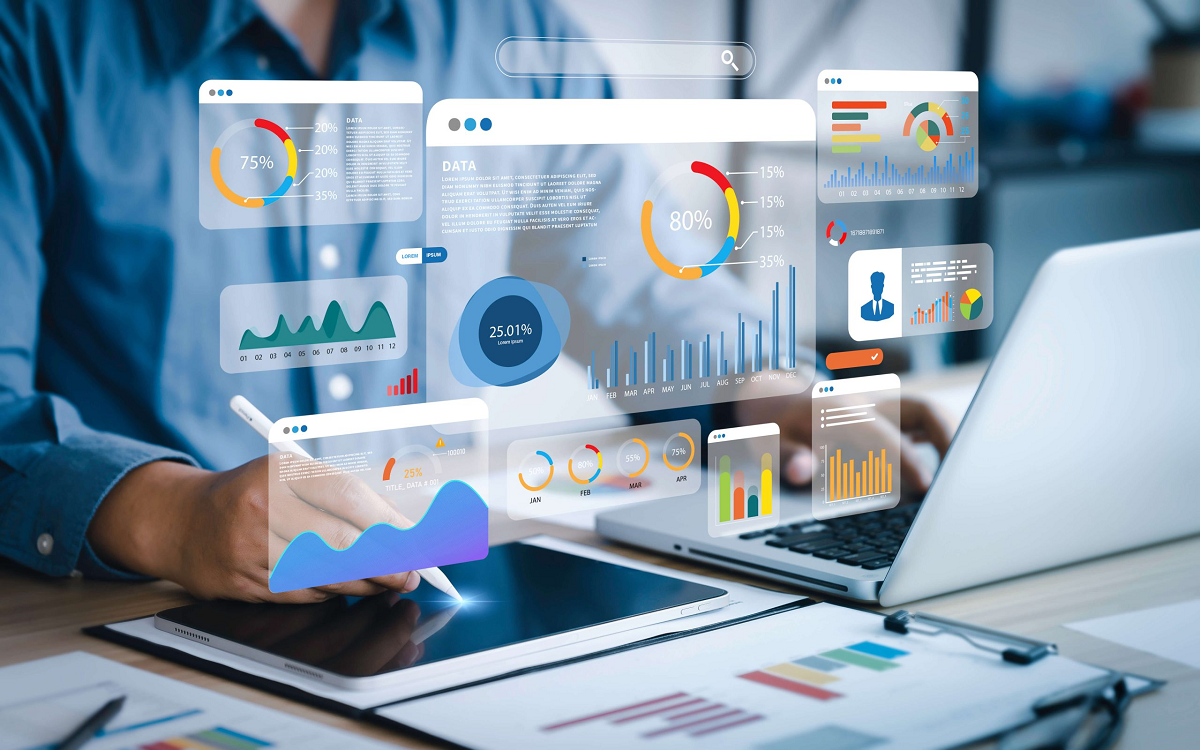BLOG
Malware Protection: Safeguarding Your Website

In the ever-evolving landscape of cybersecurity threats, one aspect that remains constant is the importance of malware protection. As the backbone of any online presence, websites are susceptible targets for various forms of malicious software designed to infiltrate, disrupt, or exploit digital assets.
Safeguarding your website against malware is not merely a precautionary measure; it's an essential component of maintaining trust, integrity, and functionality in the digital realm. From small businesses to multinational corporations, every entity operating online must prioritize robust defenses against malware.
In this comprehensive guide, we delve into the significance of malware protection for websites, exploring the diverse array of threats, the potential consequences of an attack, and, most importantly, proactive strategies and tools to fortify your digital fortress. Join us as we navigate through the intricate terrain of cybersecurity, empowering you to defend your website against the pervasive menace of malware.
Understanding Malware: Threats to Website Security
Malware poses a significant threat to website security, encompassing various malicious software designed to infiltrate, damage, or gain unauthorized access to a website's infrastructure and data.
Common types include viruses, worms, trojans, ransomware, and spyware, each with distinct characteristics and methods of exploitation. Understanding these threats is essential for website owners and administrators to implement effective defense mechanisms and safeguard their digital assets.
By comprehending how malware operates, such as through malicious links, email attachments, or compromised plugins, website operators can better protect against infiltration and mitigate the risk of damaging cyber incidents.
Common Types of Website Malware: Recognizing the Enemy
Common types of website malware pose significant threats to online security, targeting vulnerabilities in websites to compromise data and disrupt operations. Recognizing these malicious entities is crucial for fortifying defenses and protecting digital assets. Here's a breakdown of some prevalent types:
- Phishing Malware: Deceptive tactics aimed at tricking users into divulging sensitive information.
- Drive-by Downloads: Malware installation without user consent or awareness.
- SQL Injection Attacks: Exploiting vulnerabilities in website databases to execute malicious commands.
- Cross-site Scripting (XSS): Injecting malicious scripts into web applications to compromise user data.
- Ransomware: Encrypting website data and demanding payment for its release.
Understanding these common types of website malware empowers administrators to implement effective countermeasures and safeguard their online presence from potential compromise or exploitation. Stay vigilant and employ robust security measures to mitigate the risk posed by these digital adversaries.
The Consequences of Malware Attacks on Websites
Malware attacks on websites have severe and far-reaching consequences. Apart from disrupting services and risking sensitive data loss, they damage the website's reputation, eroding customer trust.
Moreover, malware compromises content integrity, spreading false information or harmful redirects. Financial losses, legal liabilities, and SEO ranking damage further compound the impact. Thus, it's crucial to implement strong cybersecurity measures to mitigate the risk and minimize fallout from such incidents.
Assessing Your Website's Vulnerabilities: Where Are You at Risk?
Conducting a comprehensive vulnerability assessment is essential for bolstering a website's defenses against malware. This entails identifying entry points and weaknesses in the infrastructure, like outdated software or inadequate access controls. Vulnerability scanning tools and penetration testing techniques uncover hidden vulnerabilities and assess existing security measures.
Regular audits provide valuable insights into security posture, allowing prioritization of remediation efforts for critical vulnerabilities. Staying updated on emerging threats and security best practices enables proactive mitigation, reducing the risk of successful malware attacks and improving overall resilience.
Essential Tools and Technologies for Malware Detection
Effective malware detection is paramount in safeguarding your digital assets against cyber threats. Leveraging essential tools and technologies enhances your ability to identify and mitigate potential malware infiltrations, ensuring the security and integrity of your systems. Here are some indispensable tools and technologies for malware detection:
- Antivirus Software: Offers real-time protection by scanning files and system processes for known malware signatures.
- Intrusion Detection Systems (IDS): Monitors network traffic for suspicious activity and alerts administrators to potential threats.
- Web Application Firewalls (WAF): Filters and monitors HTTP traffic between a web application and the internet, protecting against common web-based attacks.
- Malware Scanning Tools: Conducts regular scans of website files and databases to detect and remove malicious code or suspicious files.
- Security Information and Event Management (SIEM) Systems: Provides comprehensive visibility into security events and trends, enabling proactive defense against evolving malware campaigns.
Incorporating these tools into your cybersecurity arsenal strengthens your defenses and bolsters your ability to detect and respond to malware threats effectively. Don't leave your systems vulnerable – invest in the right tools and technologies to safeguard your digital infrastructure against malicious attacks.
Best Practices for Malware Prevention: Proactive Measures
Adopting proactive measures is crucial for preventing malware infections and enhancing website security. This involves implementing robust access controls, regular software updates, and patch management practices to address vulnerabilities.
Additionally, employing encryption protocols like HTTPS safeguards against data interception, while security headers such as CSP and X-Frame-Options mitigate common attack vectors. By adhering to these best practices, website owners can effectively reduce their exposure to malware threats and bolster the overall security of their digital assets.
Reacting to Malware Incidents: Response and Recovery Strategies
Reacting to malware incidents demands swift action to mitigate damage and restore operations. A robust incident response plan, isolation of affected systems, identifying the root cause, restoring from backups, and implementing preventive measures are essential for effective response and recovery.
- Swift Response: Act promptly to contain the malware infection and prevent further damage.
- Isolate Affected Systems: Disconnect compromised systems to prevent the spread of malware.
- Identify Root Cause: Determine how the malware infiltrated the system to prevent similar incidents.
- Restore from Backups: Recover affected data and systems to restore normal operations.
- Prevent Future Incidents: Implement measures to enhance security against malware attacks.
Reacting to malware incidents requires a coordinated effort. By promptly isolating affected systems, identifying the root cause, and restoring data from backups, organizations can mitigate the impact and strengthen security against future threats.
Secure Hosting Solutions: Choosing the Right Provider
Selecting a secure hosting provider is paramount for maintaining the integrity and security of a website's infrastructure. A reputable hosting provider should offer robust security features, such as firewalls, intrusion detection systems, and regular security updates, to protect against malware and other cyber threats.
Additionally, the provider should implement stringent access controls and authentication mechanisms to prevent unauthorized access to server resources and sensitive data. Furthermore, choosing a hosting provider that offers regular backups and disaster recovery services can help mitigate the impact of malware incidents and minimize downtime.
Conducting thorough due diligence and evaluating the security practices and track record of potential hosting providers is essential for making an informed decision and ensuring the ongoing security of the website.
Regular Maintenance and Updates: Keeping Malware at Bay
Regular maintenance and updates are essential practices for keeping your website secure and resilient against malware threats. By staying proactive and vigilant, you can minimize the risk of infiltration and maintain the integrity of your digital assets. Here's how:
- Scheduled Software Updates: Regularly updating your website's operating system, web server software, and plugins helps patch known vulnerabilities and strengthens your defenses against malware.
- Security Audits: Conducting periodic security audits and vulnerability scans helps identify and address potential weaknesses before they can be exploited by malicious actors.
- Strong Password Policies: Implementing robust password policies and enforcing multi-factor authentication mechanisms adds an extra layer of security, preventing unauthorized access to your website's administrative interfaces.
- Monitoring and Logging: Regularly monitoring website traffic and server logs enables early detection of suspicious activity, facilitating prompt remediation and preventing malware infections from spreading.
- Backup and Recovery: Implementing regular backups and disaster recovery plans ensures that you can quickly restore your website to a known good state in the event of a malware incident, minimizing downtime and data loss.
Regular maintenance and updates are critical for keeping malware at bay and safeguarding the security of your website. By incorporating these practices into your cybersecurity strategy, you can reduce the risk of malware infections and maintain the integrity and availability of your digital assets.
Educating Your Team: Building a Culture of Cybersecurity Awareness
Building a culture of cybersecurity awareness among employees and stakeholders is critical for effectively combating malware threats and protecting the organization's digital assets. Providing comprehensive training and education programs that cover topics such as recognizing phishing emails, practicing safe browsing habits, and reporting suspicious activities can empower employees to act as the first line of defense against malware attacks.
Additionally, regular security awareness campaigns and simulated phishing exercises help reinforce good security practices and keep cybersecurity top of mind for all members of the organization. Furthermore, establishing clear policies and procedures for handling sensitive information, accessing company resources remotely, and reporting security incidents ensures that everyone understands their roles and responsibilities in maintaining a secure working environment.
By fostering a culture of cybersecurity awareness, organizations can significantly reduce the likelihood of successful malware attacks and mitigate the potential impact of security breaches on business operations and reputation.
Safeguarding your website against malware is imperative in today's digital landscape to ensure its security, integrity, and reliability. By understanding the diverse threats posed by malware and recognizing common types of attacks, you can fortify your website's defenses and protect it from potential compromise or exploitation.
Assessing vulnerabilities, leveraging essential tools for malware detection, and adopting proactive prevention measures are crucial steps in maintaining a secure online presence. Moreover, establishing robust response and recovery strategies, choosing a secure hosting provider, and prioritizing regular maintenance and updates are vital components of effective cybersecurity practices.
Lastly, educating your team and fostering a culture of cybersecurity awareness can empower your organization to effectively combat malware threats and mitigate their impact. Contact Social Cali at 1-415-888-9561 or sales@socialcali.com to discover how our proven social media marketing strategies can help you dominate the competition and enhance your online security today. Join the ranks of satisfied clients who have experienced the benefits of partnering with us, and let us help you achieve your business goals while ensuring the security of your digital assets.











